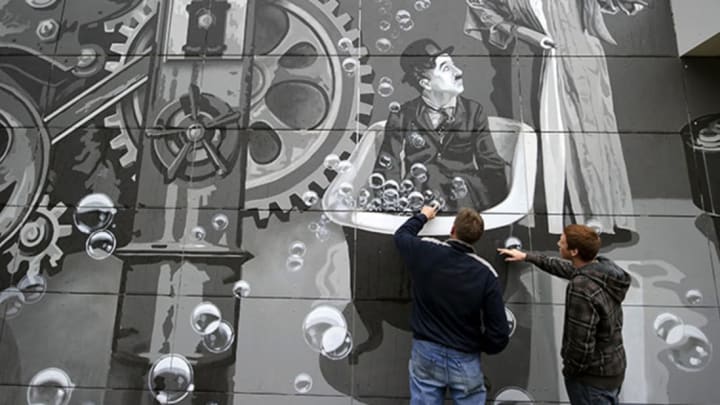On February 5, 1936, Modern Times premiered in movie theaters. It was Charlie Chaplin's last film featuring his Little Tramp character, and it showed the Tramp as a bumbling factory worker (and later night watchman, singing waiter, and ultimately unemployed drifter). The film was a commentary on the aftermath of the Great Depression and ensuing economic struggles in the US, as industrial automation slammed head-on into mass unemployment. It also happened to be truly funny.
The most famous sequence in the movie involves Chaplin working on an assembly line that is moving just a bit too fast for him, though his coworkers can handle the speed just fine. This sequence (shown below) inspired the famous I Love Lucy scene in which Lucy and Ethel work in a chocolate factory wrapping chocolates and rapidly lose pace.
One odd fact about Modern Times is its position relative to talkies (films with audible dialogue). Talkies had been around for almost a decade by the time Modern Times came out, and initially Chaplin had intended Modern Times to be his first talkie. He wrote and rehearsed dialogue for the film, and even shot some test scenes. It just didn't work. Chaplin eventually scrapped the idea, instead using synchronized sound effects, music, a faux-Italian song sung by Chaplin, and other bits of not-quite-talking audio.
Modern Times has been well-preserved by the Library of Congress (and the Criterion Collection). The film quality is stunning, and Chaplin's physical performance is dazzling, especially given that he was in his mid-40s at the time. Here's a look at one of the classic factory scenes:
Although the video isn't quite as high-quality, here's a clip of Chaplin with his eating machine:
If you haven't seen Modern Times, the best quality version is certainly the Criterion Collection reissue. Failing that, the Internet Archive hosts a low-fidelity version.
